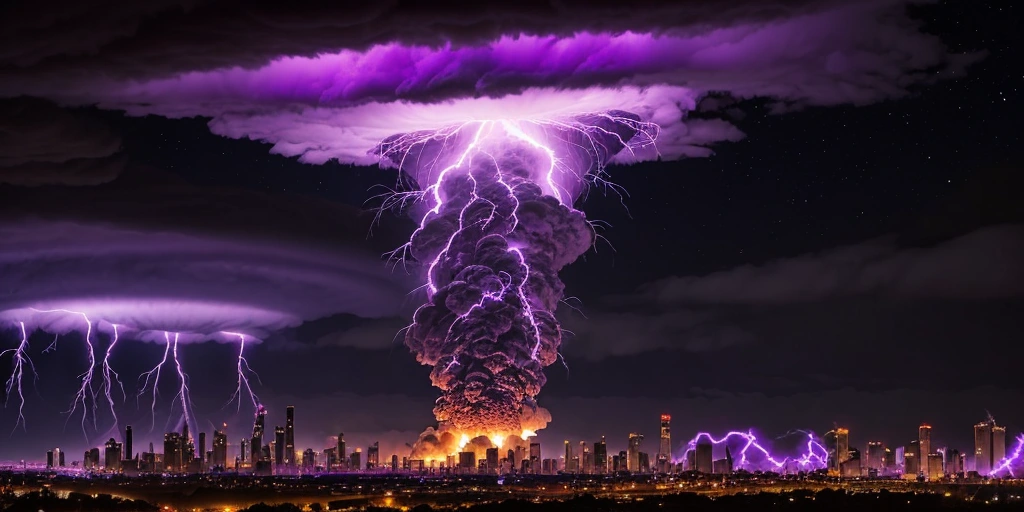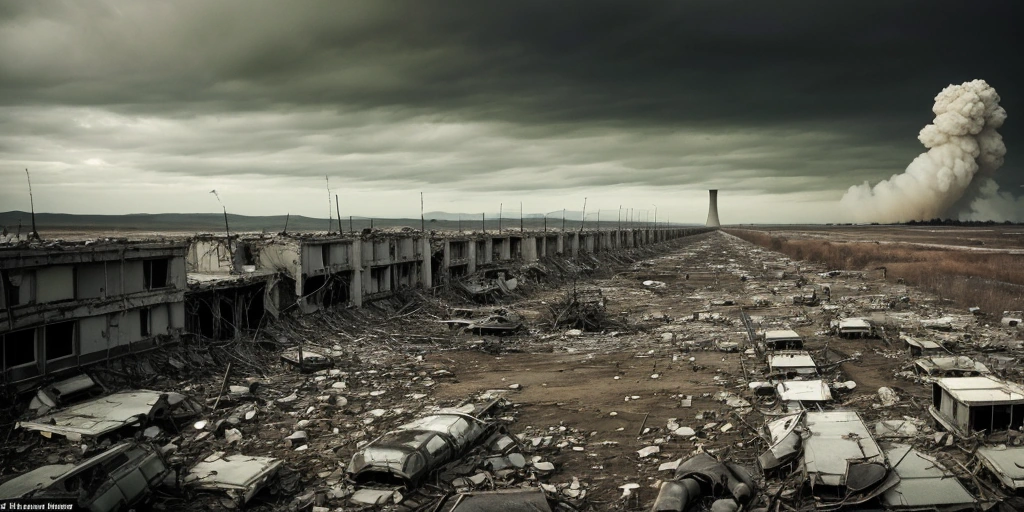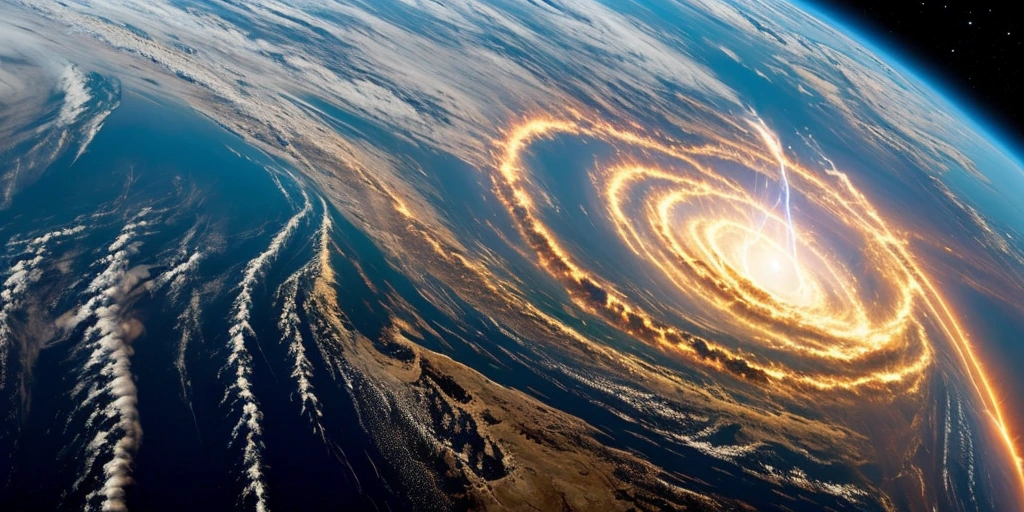Introduction: A World on the Brink of Disaster
In a world where political tensions, technological advancements, and environmental crises intersect, the threat of nuclear war looms larger than ever before. With the mere press of a button, humanity could face its most terrifying chapter—total annihilation. Why do many believe that a nuclear war is imminent? What signs point to this terrifying possibility, and how can we, as a global community, avert the disaster? The answers are complex and rooted in history, philosophy, and our understanding of human nature itself.
As we navigate through rising conflicts and alarming signs of potential end-time events, it becomes clear that we’re walking a dangerous path. The question is: How do we change course before it’s too late?

Chapter 1: The Rising Tension in a Fragile World
Every decade seems to push humanity closer to the brink of nuclear disaster. Tensions between global superpowers like the United States, Russia, and China are escalating. With territorial disputes, economic warfare, and cyberattacks, the political landscape has become a breeding ground for mistrust and hostility. The shadow of nuclear weapons is never far away.
Recent Escalations:
- Ukrainian Crisis: Russia’s invasion of Ukraine in 2022 brought the possibility of nuclear retaliation into mainstream conversation. Russian officials have hinted at their readiness to use nuclear weapons in defense of what they consider their vital interests. The international community watches nervously, knowing how easily such tensions can spiral into global catastrophe.
- South China Sea and Taiwan: China’s increasing assertiveness in the South China Sea and its claims over Taiwan have led to growing fears of a potential confrontation with the United States and its allies. With China’s vast nuclear arsenal, any conflict in this region has the potential to ignite a nuclear war.

Nuclear Deterrence: A Double-Edged Sword
The theory of Mutually Assured Destruction (MAD), which has prevented major conflicts since World War II, may no longer be enough to keep peace. With new military technologies and unpredictable leadership in some countries, the deterrence once offered by nuclear weapons could fail.

Chapter 2: End-Time Prophecies—Are They Unfolding Before Our Eyes?
Across various cultures and religions, there have been prophecies about the end of the world. Whether through divine intervention or self-inflicted destruction, many believe these prophecies foretell the dark future we’re now facing.
Biblical Prophecies:
In Christian theology, the Book of Revelation speaks of wars, natural disasters, and the rise of destructive forces as signs of the end times. While nuclear war isn’t specifically mentioned, the imagery of fire, plagues, and global destruction can easily be interpreted as symbolic of the devastation nuclear weapons would unleash.
Nostradamus and Global Destruction:
The famous 16th-century seer Nostradamus predicted global destruction through “fire from the sky” and “great kingdoms falling.” Some interpret his writings as foretelling nuclear war. With the escalating geopolitical climate, many are revisiting his prophecies and wondering if they point to an imminent global conflict.
Hindu and Islamic Prophecies:
Hindu texts speak of the Kali Yuga, an era of moral decay and violence, leading to the ultimate destruction of humanity. Similarly, in Islamic eschatology, the Dajjal (false messiah) and major battles involving fire are said to be signs of the Day of Judgment. The parallels between these prophecies and the effects of nuclear war are striking.

Chapter 3: Philosophical Perspective—Can We Change Our Fate?
Anything Is Possible: The Power of Choice
From a philosophical standpoint, one thing becomes clear: the future is not set in stone. While the signs of an impending nuclear disaster are many, the choices we make now can change the course of history. Humans have an incredible capacity for both destruction and creation. The idea that “anything is possible” is not just a comforting thought but a call to action. We can choose diplomacy over war, cooperation over conflict, and life over annihilation.
The Butterfly Effect: Small Actions Can Lead to Large Changes
One philosophical idea to consider is the Butterfly Effect, which suggests that small actions can lead to significant changes over time. For example, individuals raising awareness about the dangers of nuclear war, pushing for disarmament, and engaging in peaceful activism could lead to large-scale change. It’s a reminder that every voice counts, and no action is too small.

Human Nature: The Paradox of Progress
Humanity’s advancements in technology and warfare bring with them a paradox: we strive to progress but often at the expense of our survival. Nuclear weapons, once seen as a way to end all wars, have instead become a looming threat over our heads. Is it human nature to seek our own end, or can we evolve past this self-destructive tendency? Philosophy encourages us to ponder this paradox and consider how we can break free from this cycle of violence.
Chapter 4: Signs of an Imminent Nuclear War

1. The Arms Race Continues
Despite international treaties and diplomatic efforts, many countries are expanding their nuclear capabilities. Nations like North Korea openly defy sanctions to build and test nuclear weapons. The ongoing arms race suggests that countries are preparing for the possibility of using these weapons rather than dismantling them.
2. Geopolitical Tensions at an All-Time High
Never before have we seen so many nations locked in intense geopolitical conflict. From the Middle East to Eastern Europe, Asia to the Americas, every continent is experiencing some form of political or military unrest. These conflicts could serve as triggers for a larger, more destructive war involving nuclear weapons.
3. Cyber Warfare: A New Front for Nuclear Threats
With the rise of cyber warfare, the risk of nuclear weapons being hacked or accidentally launched has become a genuine concern. A cyberattack could override existing defense systems and lead to unintended disaster. The fragility of our technological systems puts us one step closer to nuclear catastrophe.
4. Climate Change: A Catalyst for War
As natural resources become scarcer due to climate change, countries may go to war over water, food, and land. Climate change is already being recognized as a threat multiplier, increasing the likelihood of conflict. With nuclear weapons at play, such wars could lead to unimaginable destruction.

Chapter 5: How Can We Change This Course?
1. Diplomacy and Peaceful Negotiation
The most immediate solution is the promotion of diplomacy over aggression. Nations must engage in meaningful dialogue to resolve their differences without resorting to violence. International organizations like the United Nations need to be more proactive in disarmament discussions and peace-building efforts.
2. Public Awareness and Advocacy
Educating the public about the dangers of nuclear weapons is crucial. Advocacy campaigns that push for disarmament, treaties, and global cooperation can create the groundswell needed to effect change at the policy level. The more people understand the risks, the more they will pressure their governments to act responsibly.
3. International Cooperation on Climate and Resources
Nations must work together to tackle the root causes of many conflicts—resource scarcity and climate change. By collaborating on sustainable solutions, we can prevent wars that might escalate into nuclear conflicts.
FAQs on Nuclear War and End-Time Prophecies
- Why do some believe a nuclear war is imminent?
- Geopolitical tensions, the arms race, and fragile technological systems make the threat of nuclear war more real than ever before.
- What are the signs that point to the end times?
- Wars, natural disasters, and moral decay across the world are often cited as signs in religious prophecies of the end times.
- What is Mutually Assured Destruction (MAD)?
- MAD is a military doctrine where both sides in a conflict would be completely destroyed if nuclear weapons are used, deterring either side from launching an attack.
- How does climate change increase the risk of nuclear war?
- Resource scarcity caused by climate change can lead to conflicts over essential resources, increasing the chance of war between nuclear-armed nations.
- Can nuclear weapons be hacked?
- Yes, the risk of cyberattacks on nuclear weapons systems is a growing concern, as it could lead to accidental launches.
- Do religious prophecies mention nuclear war?
- While nuclear weapons aren’t specifically mentioned, the devastation described in some prophecies can be interpreted as being similar to the effects of a nuclear war.
- Is it possible to prevent a nuclear war?
- Yes, through diplomacy, disarmament, and international cooperation, the threat of nuclear war can be reduced.
- Can individuals make a difference in preventing nuclear conflict?
- Absolutely. Public advocacy, raising awareness, and voting for policies that promote peace can help steer the world away from nuclear disaster.
Conclusion: A Time for Change
The threat of nuclear war, combined with the signs of end-time prophecies, can feel overwhelming. But humanity has the power to change its fate. By embracing diplomacy, advocating for peace, and reflecting on the philosophical implications of our actions, we can prevent the world from descending into a nuclear nightmare. Now is the time to act—before it’s too late.
Sources:


